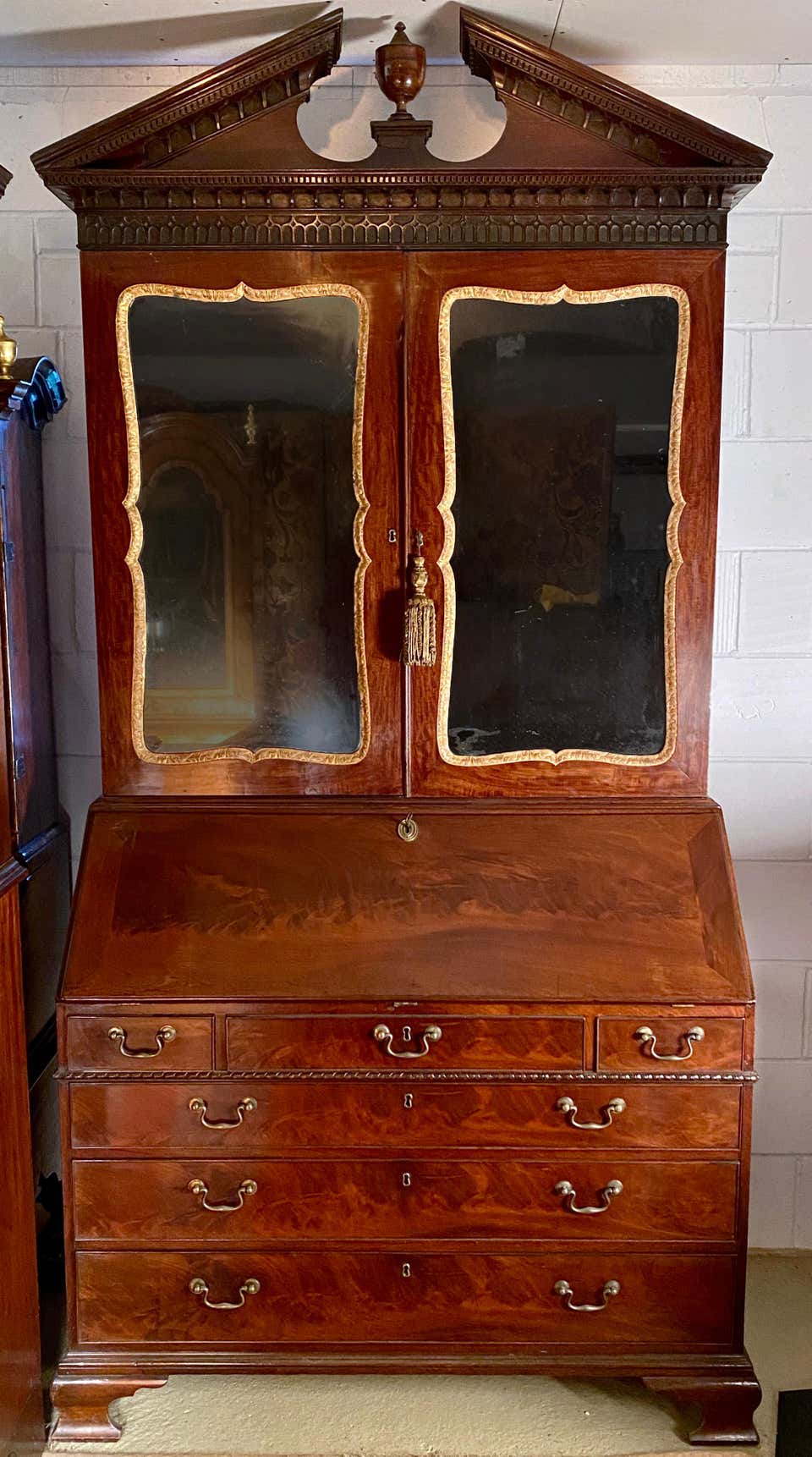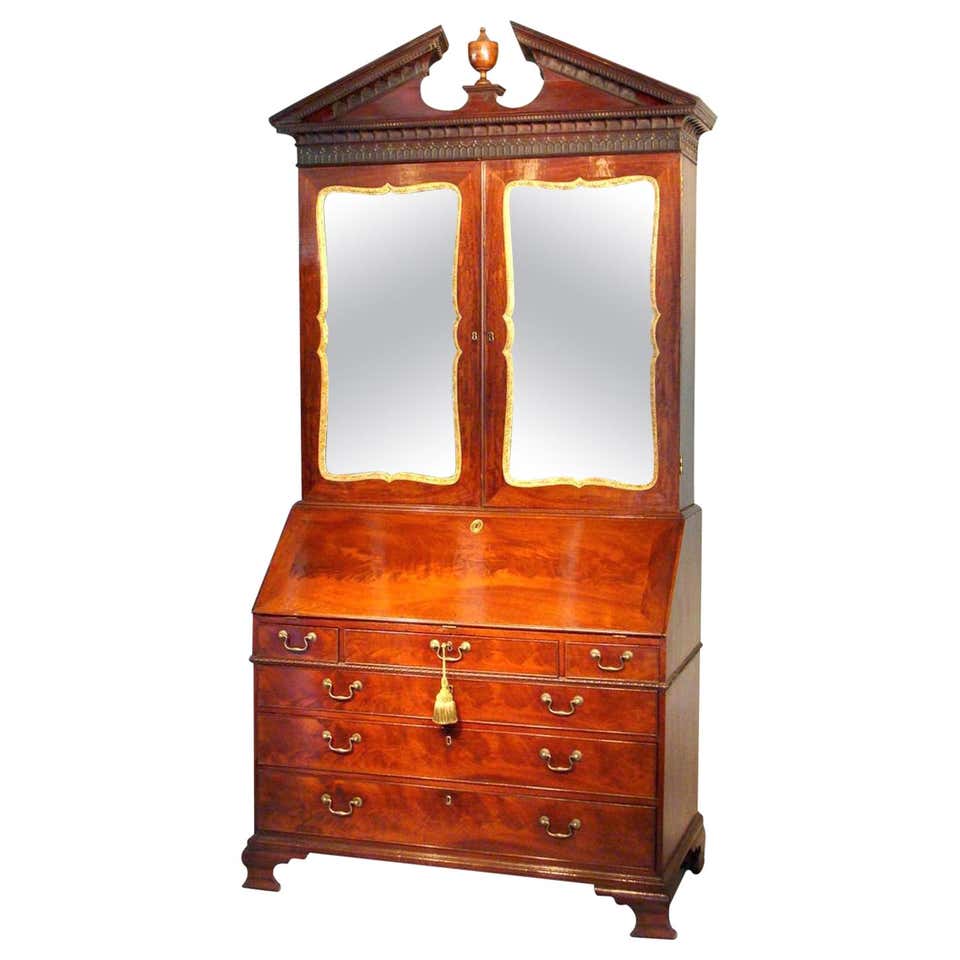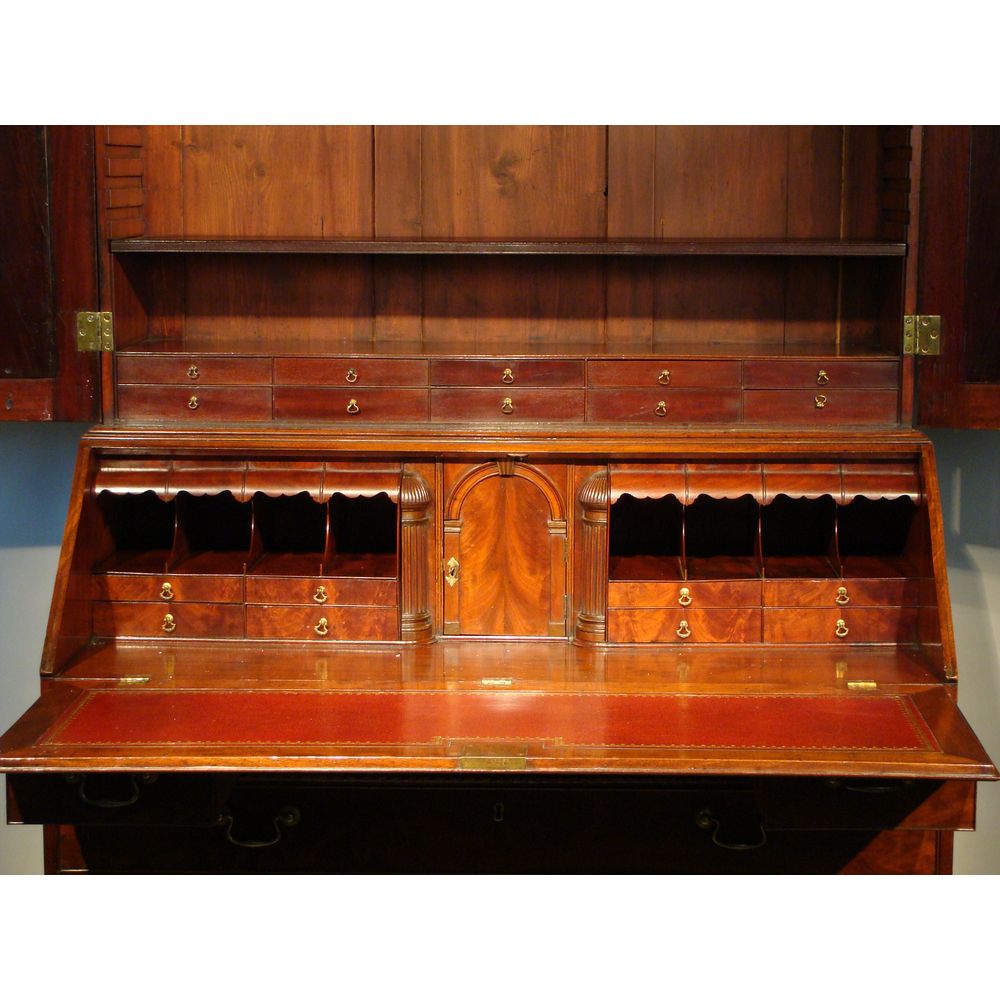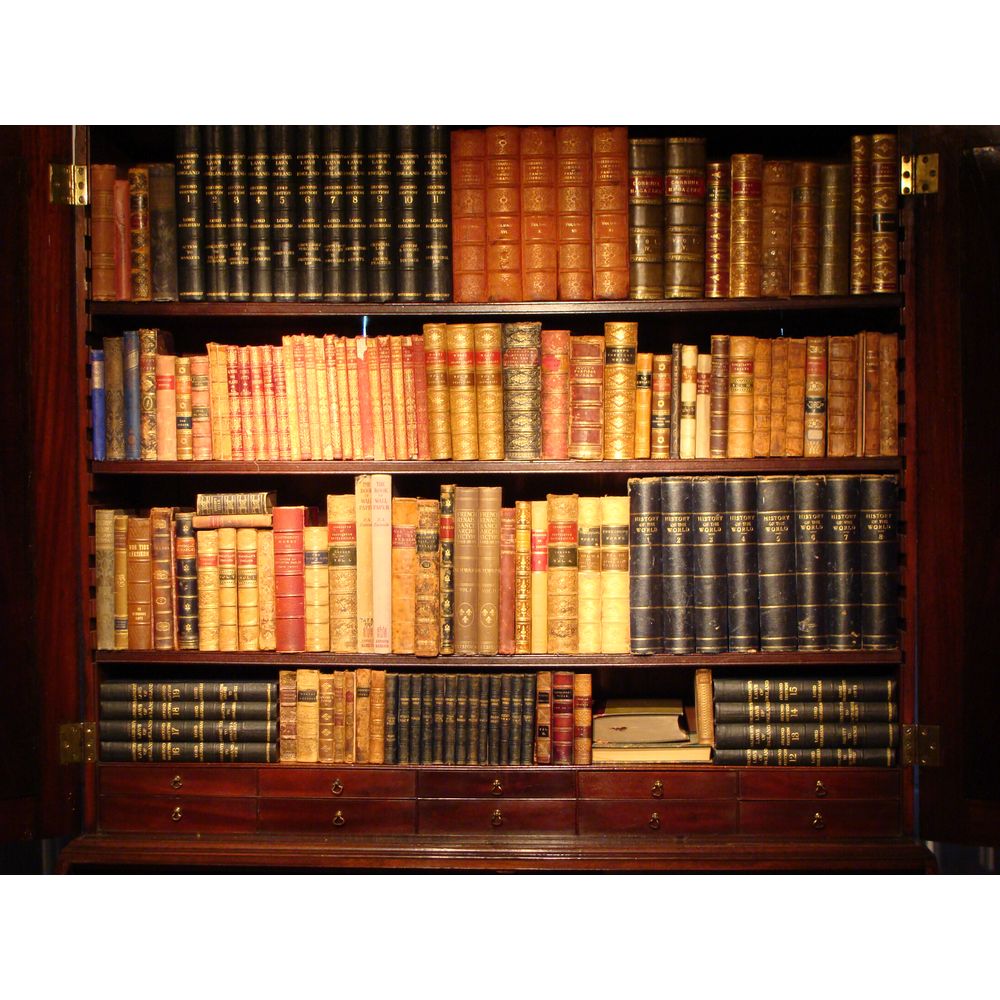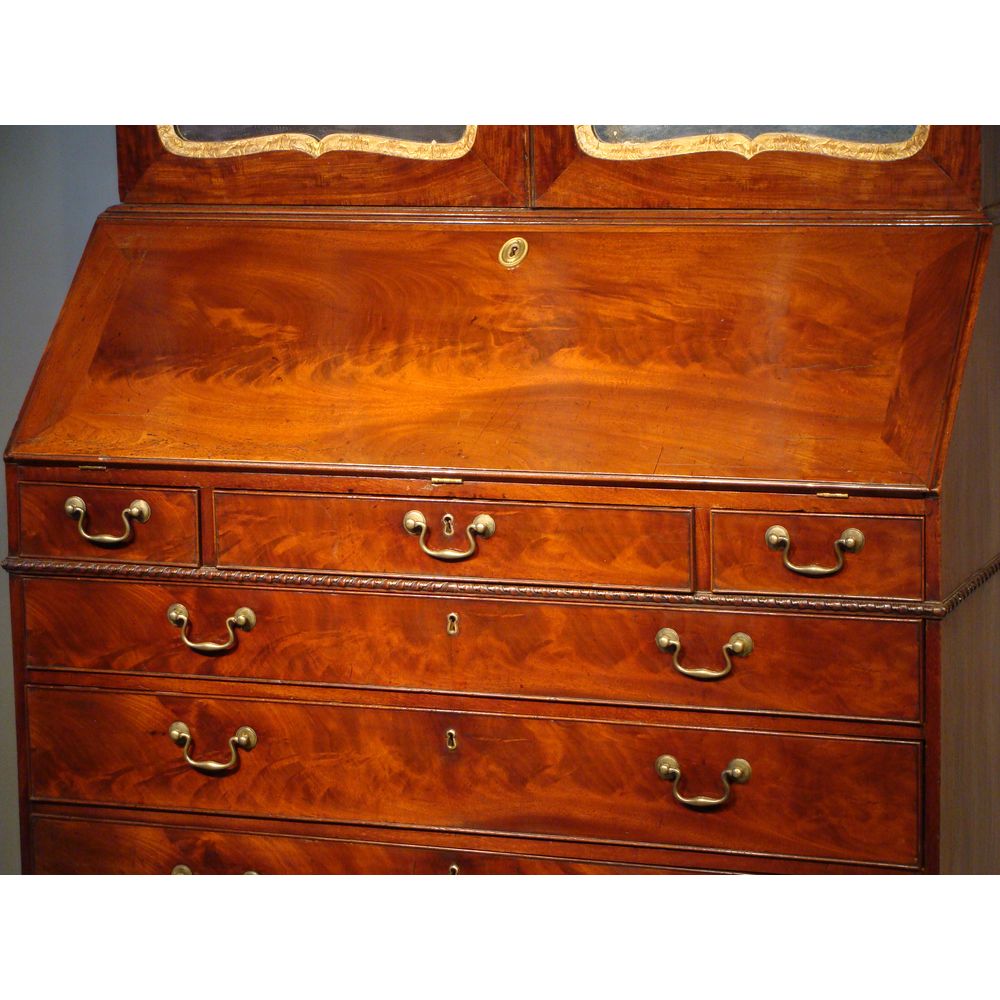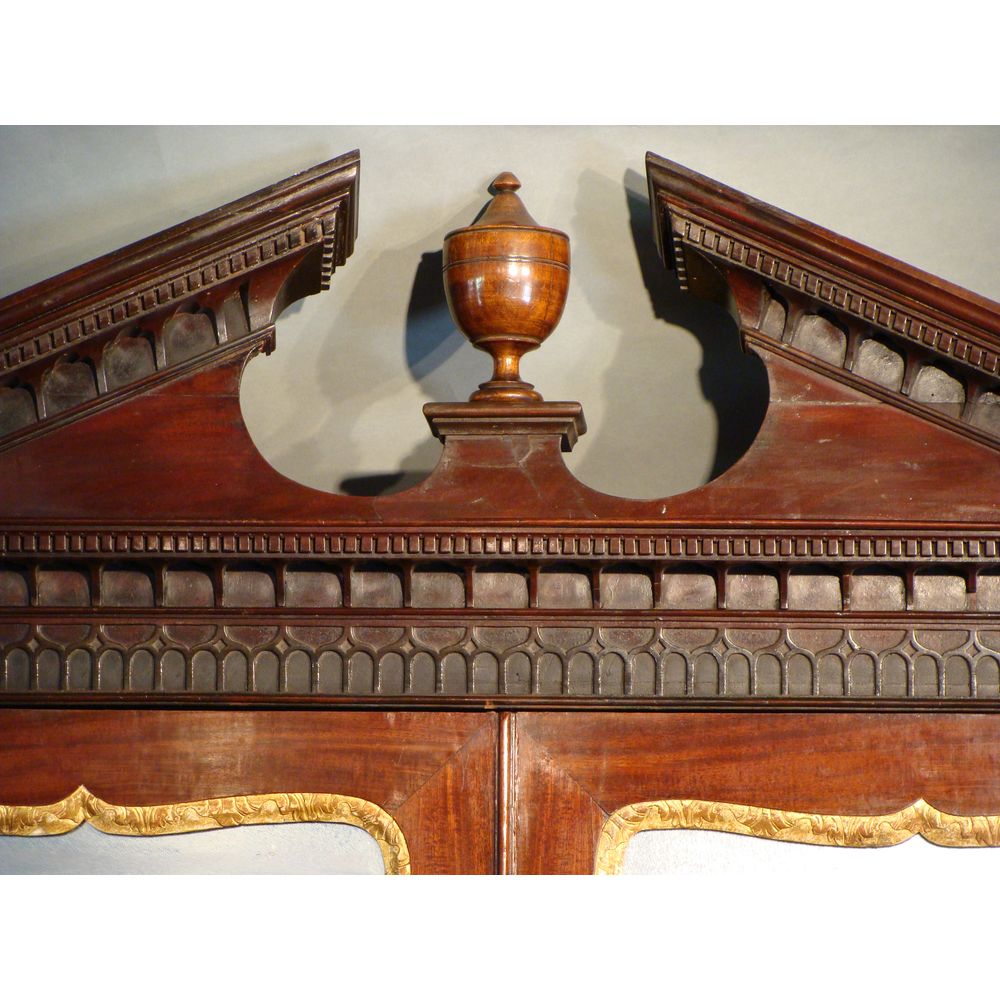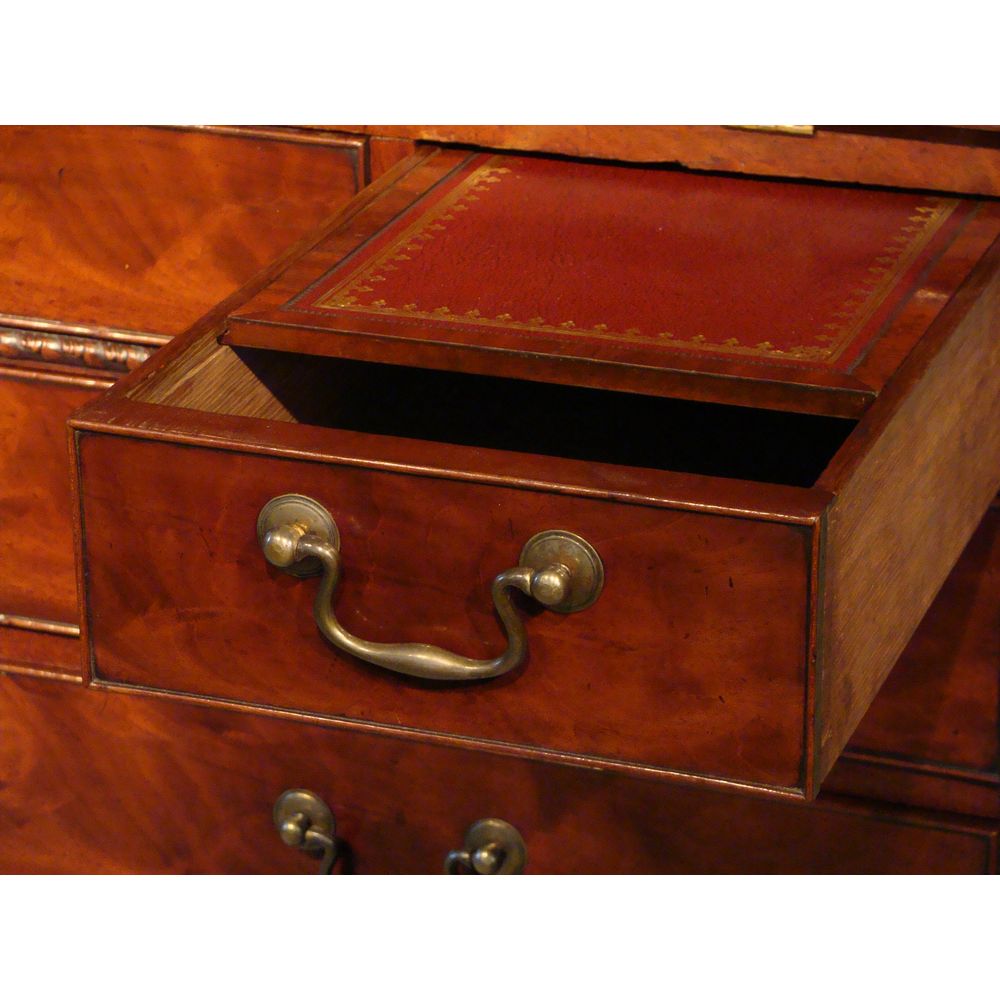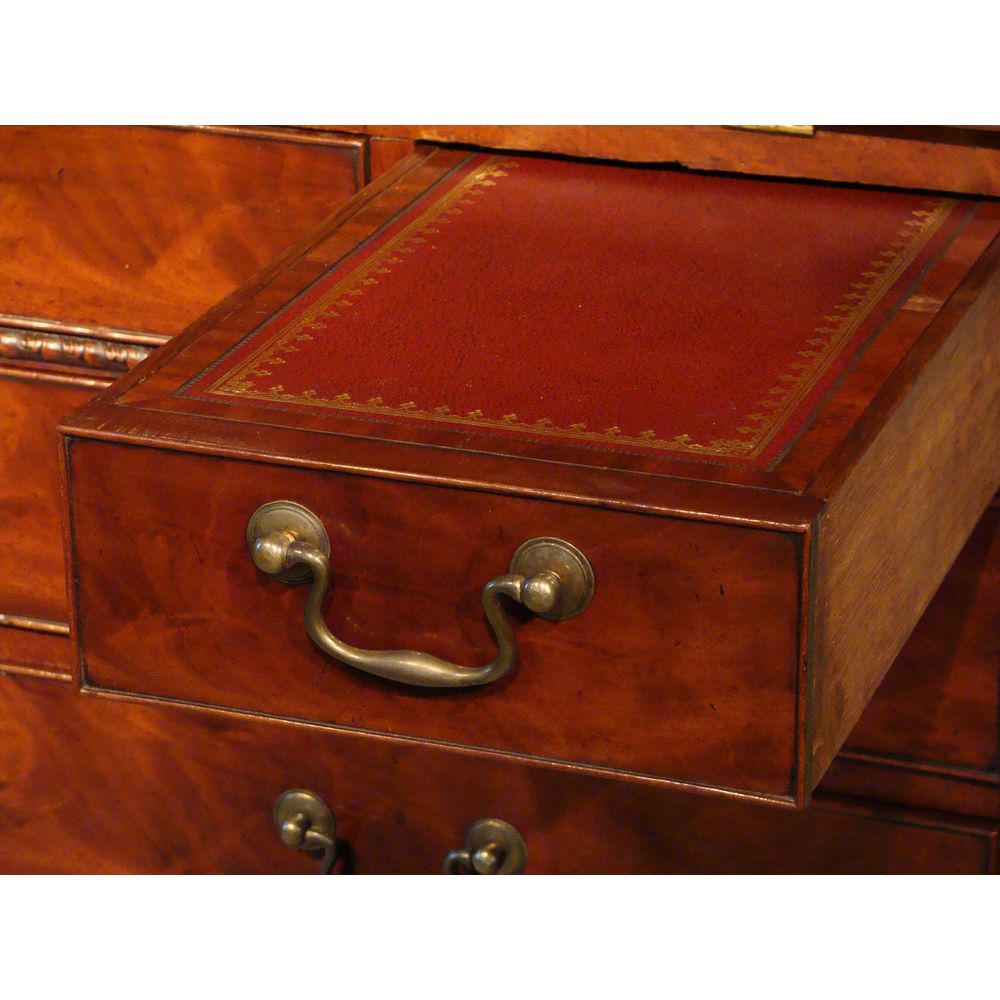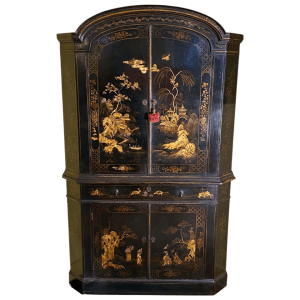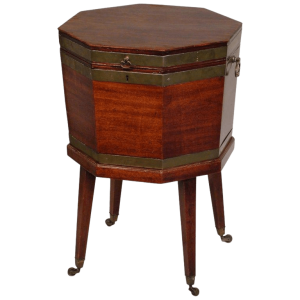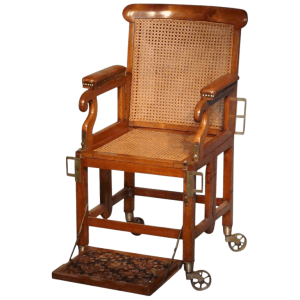Description
An impressive mahogany bureau cabinet / bookcase / secretary*, with secret compartments. In mahogany and parcel gilt.
In the manner of Giles Grendey (1693-1780).
Mid-18th century, George II period.
This fine English mahogany bureau cabinet displays deep rich colour and superb surface patination.
The top section with a broken-arch pediment and dentil cornice. The frieze well carved with Gothic arcaded blind fretwork. Centred by a later urn-shaped finial.
The cabinet with two carved parcel-gilt gesso bordered ogee shaped doors. Old but later mirror plates enclosing a fitted interior with eight drawers and adjustable shelves.
The cleated fall, with its original lock, now fitted with a wine red, gilt-tooled writing surface revealing an exceptionally high quality arrangement of canopied drawers and pigeon holes. The interior is centred by an arched, architectural over door, which pulls out as a secret drawer. The floor within the central door also slides forward revealing a secret recess.
Below is an arrangement of three long and three short cockbeaded drawers. The outer short drawers, unusually fitted with sliding writing surfaces with matching wine red gilt-tooled leather, serve as supports to the hinged fall. All set with the original swan-neck brass mounts and key escutcheons. All in high quality mahogany and oak lined throughout. It is raised on its original ogee bracket feet.
The ‘Cabinet-Maker and Chair-Maker’ Giles Grendey was described in 1740 as ”A great Dealer in the Cabinet Way”. He carried out a considerable export trade from Aylesbury House in St. John’s Square, London. He was appointed Upper Warden of the Joiner’s Company in 1747 and it’s Master in 1766. His son-in-law, John Cobb, was granted a court appointment as cabinet-maker to George III.
Records of Grendey’s export business have never been doubted. A fire that badly damaged his workshop in 1731 also destroyed furniture to the value of £1,000, that he ‘had pack’d for Exportation against the next Morning’. It is a tantalizing possibility that the destroyed export furniture was intended for Spain and that the existing Lazcano suite is in fact its replacement.
These sophisticated and Classic architectural bureau cabinet/ bookcases are reminiscent of some of William Kent’s earlier designs (1685-1748).
Sothebys offered an almost identical bureau cabinet in the Devenish Collection sale, 24th April 2008, lot 26 est. USD $20,000-30,000.
Literature:
S. Stuart, Gillows of Lancaster and London, 1730-1840′, vol. II, 2008, p. 61, pl. 607.
Percy Macquoid, ‘History of English Furniture, vol. III, The Age of Mahogany‘, pl. 7.
See a drawing of a chimney piece surround in the Victoria & Albert Museum showing similarities in the treatment of a pediment.
vanda@vam.ac.uk (Gallery location: Prints & Drawings Study Room, level E, case A, shelf 156, Museum no. 208.)
The cartouche-form mirror surrounds with carved gilt fillet border, broken arched pediment and brass lifting handles are all features typically associated with the well-renowned cabinet-maker Giles Grendey of Clerkenwell.
See two labelled pieces illustrated in C. Gilbert, ed., Pictorial Dictionary of Marked London Furniture 1700-1840, 1996, pp. 240-241, figs. 432-433.
While Grendey is best known for his trade in lavish japanned furniture, he also produced neatly-made walnut and mahogany pieces for the English market. Similarly complex moulded panels also appear on the work of Philip Bell, of St. Paul’s Churchyard, London (op.cit., p. 100, figs. 100-101).
*Nb. An antique bureau cabinet is often referred to as a ”secretary” in the US.




